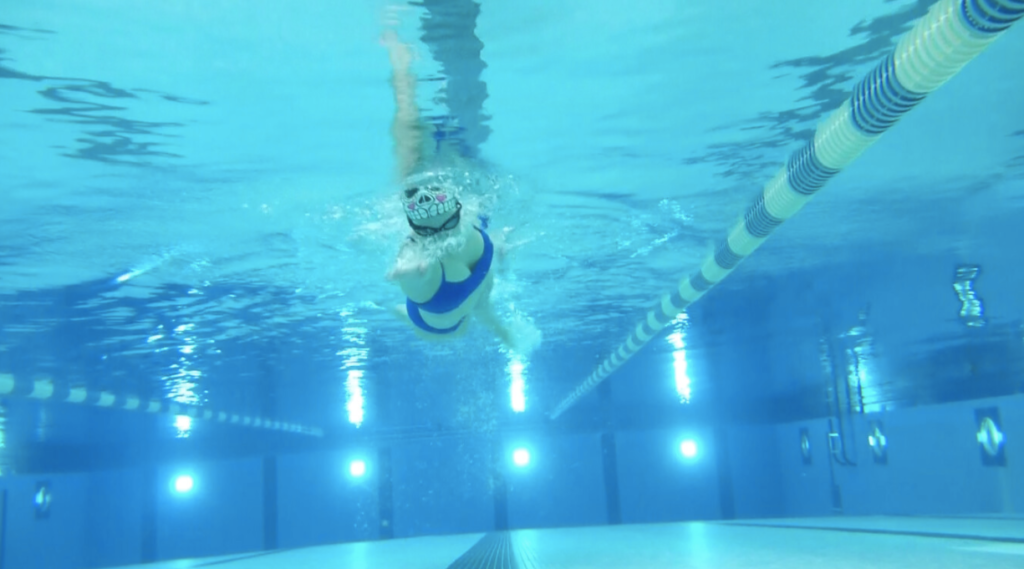Swimming is one of the most common forms of exercise and sport out there. According to the Center for Disease Control, it is the fourth most popular sport activity in the United States.
Although at the highest levels the sport is supremely technical (which explains why swimmers like Michael Phelps and Katie Ledecky make it look so easy), for the regular Joe or Jill, lap swimming is an accessible and highly effective form of physical activity that you can use no matter your current fitness level.
Read on to learn just how excellent swimming laps can be and how effective it can be for your overall physical and mental wellbeing.
You can spend more time exercising. Unlike most land-based activities and forms of exercise, swimming is very low-impact. With the water removing around 90% of your bodyweight, you have a sense of free fallin’ (to quote the late Tom Petty) into weightlessness. For gym-goers and athletes who are looking for a way to get more workout for less impact, lap swimming is your go-to form of exercise. Cider et al (2011) found that sedentary individuals were able to exercise for far longer in the water compared to traditional forms of dry exercise thanks to the reduced load on joints, ligaments and muscles.
Swimming laps is a great way to speed up recovery. Active recovery has become much more commonplace in recent years. The concept is simple: move your body in the days and hours after a strenuous workout to promote blood flow and reduce inflammation. Because of its low impact and full-body nature, swimming is a terrific option for loosening up the stiffness and soreness in the aftermath of a hard workout. Research backs this up: A study published (NF) in the International Journal of Sports found that compared to full rest, swimming was much better for speeding up recovery and reducing soreness.
Full body training (with the option of targeting different areas). Swimming looks like it has a limited number of ways to get in shape. Pick your favorite stroke—freestyle, backstroke, breaststroke, butterfly—put on your swim googles and away you go. But beyond the fact that you are working just about your entire body when swimming any of the four swimming strokes, there are alternatives to regular swimming that you can do to target specific body parts. For someone who wants to specifically hit their shoulders, lats and arms, strap on a pair swim paddles and a pull buoy to blast away at your upper body. If stronger, fitter legs are what you are after, put on a pair of short-blade training fins and grab a kickboard and off you go. Swimming, unlike running or cycling or split-body weight training offers a way to get stronger and fitter from head to toe each time you jump into the water.
Lap swimming powers up your lungs. One of the most-cited health benefits of swimming in a pool is how the activity helps develop strong lungs. Unlike most forms of exercise, swimming requires you to be very attentive to your breathing. Swimming properly–and avoiding that pesky drowning thing–requires inhaling quickly and deeply before taking your next stroke, and exhaling consistently while you have your face down in the water. The stress of daily life has turned many of us into shallow breathers, breathing rapidly and without intention from our chest. Swimming teaches you to breathe deeply on both ends of your breath. One paper took groups of swimmers and runners and compared lung strength and volume. The swimmers, who had been retired for an average of three years from competition, had vastly stronger pulmonary capacity and expiratory volume compared to the running group.
You will burn more calories than you realize. Another sneaky benefit of lap swimming is that while you notice your shoulders burning and your lungs working overtime (since they are working properly for once!), the caloric bonfire that is happening inside you is likely going unnoticed. Unlike the instant feedback that a sweaty brow or a soaked through t-shirt provides, in the water you don’t really notice how hard you are working. The cool temperature of the water, the absence of sweat, and the “relaxing” sense of floating in the water hide just how effective swimming is at lighting calories on fire. Even swimming at a “light to moderate” pace wildly out-burns riding a stationary bike or an elliptical trainer for comparable periods of time.



